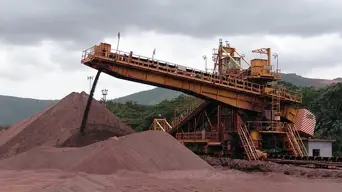NELLY MASHABA | MQA highlights available but hard-to-fill jobs in the mining sector amidst high unemployment
Nelly Mashaba
9 July 2025 | 13:43Nelly Mashaba digs into the data and insights from the MQA’s Research Colloquium in an effort to determine how the mining sector can contribute meaningfully to employment.

Every quarter, South Africans brace for the latest announcement on the current unemployment rates.
Youth unemployment specifically is a major issue in the country, with rates having reached 46.1% in the first quarter of 2025, which paints a bleak picture of a large population of people between the ages of 15-34 struggling to find work.
These alarming numbers undoubtedly affect not only the economy and its potential, but individuals, as well as the households and communities they reside in.
On Tuesday the 1st of July, the Mining Qualifications Authority (MQA) – which is the SETA responsible for skills development and training initiatives for the mining and minerals sector of South Africa, held its annual Research Colloquium, with the view of making sense of the state of the mining and minerals sector, in order to best guide sector planning in order to achieve greater impact, particularly where skilling and transformation is needed.
Of the many insights that were revealed during the presentations, some were not surprising, such as the fact that the sector still had a larger male predominance in its workforce – which is currently at 79% (dropped from 83% in 2021), and females employed within this sector only accounting for 21% (which is higher than the 17% which it was at in 2021).
This particular rise in females entering this sector points to a slow but gradual crawl toward gender diversity, which has historically been a thorn in the side of this specific industry.
While the largest group of those employed within the mining and minerals sector are individuals with a Grade 12 (which currently stands at 45%, up from 29.8% in 2025), the sector shows a gradual but small increase in employees who hold higher education training such as Diplomas and Bachelor’s Degrees. The impact of this is perhaps most annotated in the sector’s "hard to fill vacancies".
As of 2025, positions such as engineering manager, mining manager, geologist, mining engineer and auto electrician, among many others in the same category, still prove hard to place individuals in, with a large number of currently open vacancies in mines across the country.
While the reasons provided for this range from lack of appealing remuneration packages to unsuitable job locations, the most dominant reason provided is by far the lack of relevant qualifications (desired level of study not attained or inappropriate field of study, or inappropriate subject specialization and experience).
Mr. Joseph Komane, who is the senior manager responsible for research and development at the Mining Qualifications Authority, reveals that there has been a persistent challenge in filling seven specific roles within the mining sector, in particular.
"Roles such as mining manager, supervisor and production manager are proving hard to fill. In the engineering side of things, we find that the sector struggles to find adequately qualified engineers in general. There are big shortages for mechanical and mining engineers across the board. There is also a need for professionals with leadership skills, this includes professionals in health and safety as well as legal experts," he says.
Asked about what organisations such as the Mining Qualifications Authority are doing to help close this gap, Dr Thabo Mashongoane, who is the MQA’s chief executive officer, says that transformation and skills development for the sector is top priority in the mandate of the MQA.
"The crucial function of research is to inform sectoral planning so we can conceptualise and implement skills development interventions. Over the past five years, we have invested approximately R5 billion (R5,447,974,342) in various strategic learning programmes resulting in our learners being trained and obtaining skills so that they can contribute to our sector and the economy at large. This substantial commitment reflects our unwavering dedication to developing skills and creating opportunities for South Africans who are already in this sector, and those who wish to participate in it.
"Our investment has supported a wide range of initiatives, including artisan development; work integrated learning; learnerships targeting both employed and unemployed individuals, as well as adult education and training among many of our interventions," he states.
Komane augments the sentiment of Mashongoange, adding that the mining and minerals sector in South Africa requires a two-pronged approach to skills development, which is attracting new talent and upskilling, reskilling and cross-skilling the existing workforce.
"A collaborative effort between industry, educational institutions, and the MQA is crucial, using a data-driven and adaptable approach to skills development. Sustainability for this sector can no longer be treated as an afterthought," he concludes.
While factors such as automation and digitisation are diversifying the mining and minerals sector and making it more attractive to new entrants and younger people, data and insights from the Research Colloquium prove that this sector has greater potential to not only continue to be a big contributor to the South African GDP, but to contribute meaningfully to employment.
Nelly Mashaba - Skills Development and Research Manager at the MQA
Trending News
More in Opinion

12 December 2025 15:34
CHARLES MATSEKE | The Republic of commissions arrives at its point of no return

12 December 2025 14:15
REBONE TAU | Ekurhuleni needs bold, decisive leaders to reverse years of capture

12 December 2025 05:13
MANDY WIENER | Searching for a superhero with a spine of steel: Why the position of NDPP matters so much












